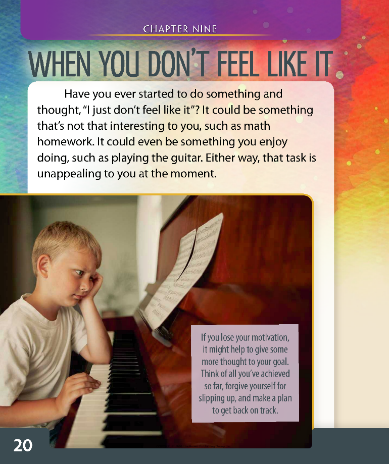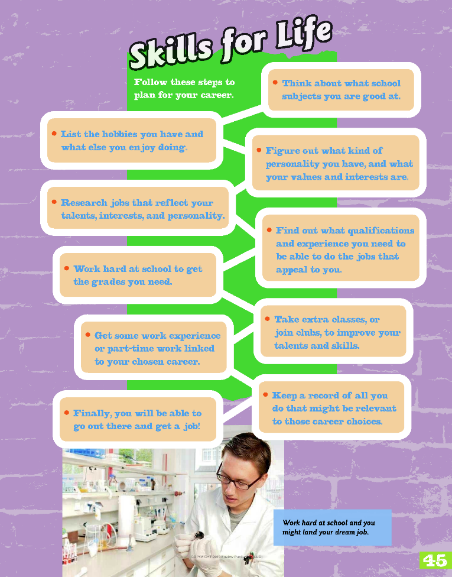| By Nicole Albrecht |
Teachers are known for having many tasks and challenges to handle in the classroom—from behavioral interruptions to technology issues—and these intrusions can quickly become overwhelming. For teachers, learning to self-manage is a skill that can come with training, mentoring, or years of experience.
Similarly, students also encounter their own challenges and must learn to self-manage, but for them, this skill is best learned through empowerment. According to CASEL’s Framework, self- management is “the ability to regulate one’s emotions, thoughts, and behaviors effectively in different situations. This includes managing stress, controlling impulses, motivating oneself, and setting and working toward achieving personal and academic goals.”1
But this can be easier said than done. And that’s where Gale eBooks social and emotional (SEL) student collections come in.
Elementary School
For younger students, learning to manage different emotions and thoughts can be a difficult task to achieve, especially if they don’t understand what they’re feeling. Helping students recognize and respond to feelings in a healthy way is the first step toward learning self-awareness, another of CASEL’s core competencies. Once students can grasp their feelings, the next step is to learn how handle them. Goal setting helps develop a growth mindset and build character, but students need to be guided on how to choose goals, set them, and reflect on them.
Elementary school children are still mastering the basics.TheI Have Feelings series by Britannica Digital Learning can help students learn how to not only identify their feelings but also how to best manage them.


Savina Collins, I Have Feelings (Chicago: Britannica Digital Learning, 2017).
Younger students can also benefit from learning how to manage stress by creating healthy goals and routines. Spotlight on Social and Emotional Learning by PowerKids Press helps students create healthy routines, such as getting enough sleep, eating regularly, and exercising. Routines can also be writing in a journal, listening to music, or practicing yoga.

Theresa Emminizer, Spotlight on Social and Emotional Learning: Keeping Calm and Focused; Stress Management (New York: PowerKids Press, 2020).
It’s important for students to understand that goals can be created around simple, everyday routines. Brushing their teeth, making lunch, or taking care of pets are all worthy goals for young learners. Parents and teachers can use several Gale eBooks to guide students through goal setting and managing routines.
Lynda Arnez. We Can Be Responsible! (New York: Gareth Stevens Publishing, 2020).
Middle and High School
For older students, learning to self-manage can be more complex. The foundational skills of managing emotions and setting goals are met, and students work on motivating themselves to complete tasks and achieve their goals. For this to happen, students need to start with an understanding of what motivation is—including how it’s connected biologically, socially, and emotionally to each person.
Self-motivation is an essential skill young people need to succeed at school and in life. Spotlight on Social and Emotional Learning: An Inner Drive; Self-Motivation introduces the SEL core competency of self-management and the ability to set and work toward goals. Readers learn how to work through setbacks and harness their inner drive. Strategies for everyday use are paired with relatable scenarios to provide the tools needed to get motivated and succeed.

Caitie McAneney. Spotlight on Social and Emotional Learning: An Inner Drive; Self-Motivation (New York: PowerKids Press, 2020).
While it’s OK to start simple, motivation and goal setting is much more than just cleaning your bedroom or washing the dishes. For most older students, goals and their motivation to achieve them can be much more challenging, like finding a job or purchasing a first car. An engaging series by Enslow, Life Skills, speaks directly to students and can help them start a dialogue about the important issues going on in their lives. What steps can they take to plan their careers, overcome an addiction, or stop a fight with family or friends? Informative sidebars provide more detailed advice about what to do and what not to do, and diagrams present information in a visually appealing format.

Louise Spilsbury. Got Career Goals? Skills to Land Your Dream Job (New York: Enslow Publishing, 2019).
Want more ideas to support your students’ SEL this fall with Gale eBooks? Find practical tips here.
1.“What Is SEL?” CASEL, accessed July 15, 2020.
Meet the Author
Nicole is a certified high school teacher from Michigan. She has her Master’s degree in Curriculum & Instruction with a focus on Adolescent Literacy. As a former teacher, Nicole recognizes the importance of curating eBook collections that meet the needs of the school and students. She loves reading and spending time with her parrot, Turkey.




